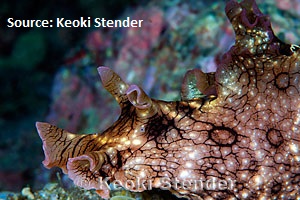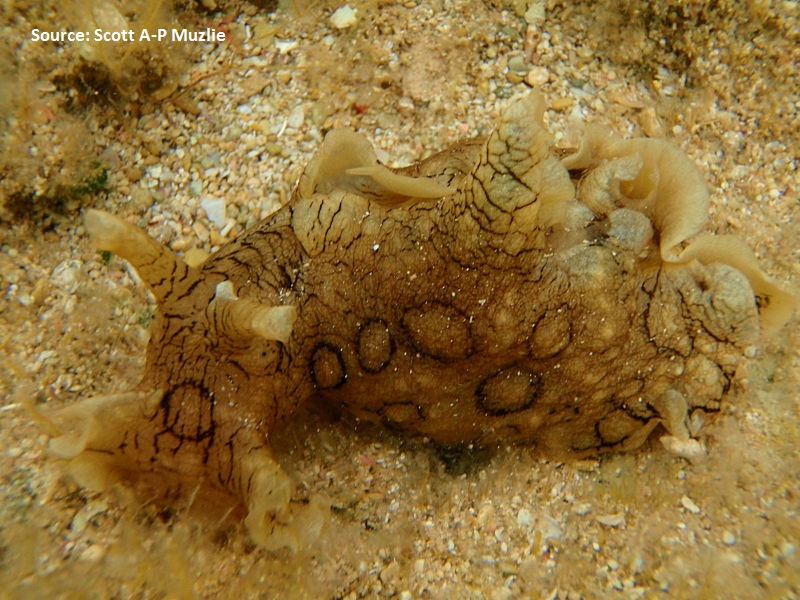
Classification
Domain: Eukarya
Kingdom: Animalia
Phylum: Mollusca
Class: Gastropoda
Order: Anaspidea
Family: Aplysiidae
Genus: Aplysia
Species: Aplysia dactylomela
This phylogentic tree shows the domain, clade, kingdom, and phylum that Aplysia dactylomela fits into (highlighted in red boxes).
Classification breakdown:
Domain: Eukarya
(Eu- meaning true kary- meaning nucleus)
A. dactylomela is classified under the domain Eukarya because its cells are nucleated and have membrane bound organelles.
Kingdom: Animalia
(Animal- meaning animal)
This sea hare's placement in the kingdom Animalia is due to its multicellular, heterotrophic, and motile features.
Phylum: Mollusca
(Mollusc- meaning soft; a shellfish)
True to the synapomorphy of the phylum Mollusca, A. dactylomela has a soft mantle covering its body (Encyclopedia Britannica 2014).
Class: Gastropoda
(Gastro- meaning stomach;belly, pod- meaning foot)
The spotted sea hare falls into the class Gastropoda as it includes all snails and slugs. Slugs have shells that have been internalized or exist internally as tiny granules (Encyclopedia Britannica 2014).
Order: Anaspidea
("shield-less snails")
The order Anaspidea includes all sea hares which includes
Aplysia dactylomela, commonly known as the spotted sea
hare. Sea hares in this order shells have been reduced to an
internal flat plate and they no longer eat microscopic algae
but larger seaweeds (Encyclopedia
Britannica 2014). To see their eating habits click
here.
Family: Aplysiidae
(Aplys- meaning a sponge;filthiness)
Aplysia dactylomela falls within this family because of its two pairs of head tentacles which appear to look like hare (rabbit) ears (read more here). Also helping categorize the sea hare are its lateral para-podia and the ink and opaline defensive glands common to Aplysiidae (Klussmann-Klob 2004).
Genus: Aplysia
(Aplysia- meaning a sponge; filthiness)
This phylogenetic tree shows some species of genus Aplysia. It is clear that of all species of Aplysia, (the sea hare genus) the one that shares the most common ancestor with A. dactylomela is A. oculifera.
Species: Aplysia dactylomela
(Dactyl- meaning finger;toe, mela- meaning cheeks)
All Latin and Greek root word translations were done so using Donald J. Borror's "Dictionary of Root Words and Combining Forms".
Up next: Dig into the habitat and geography of the spotted sea hare

